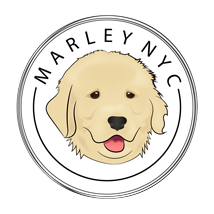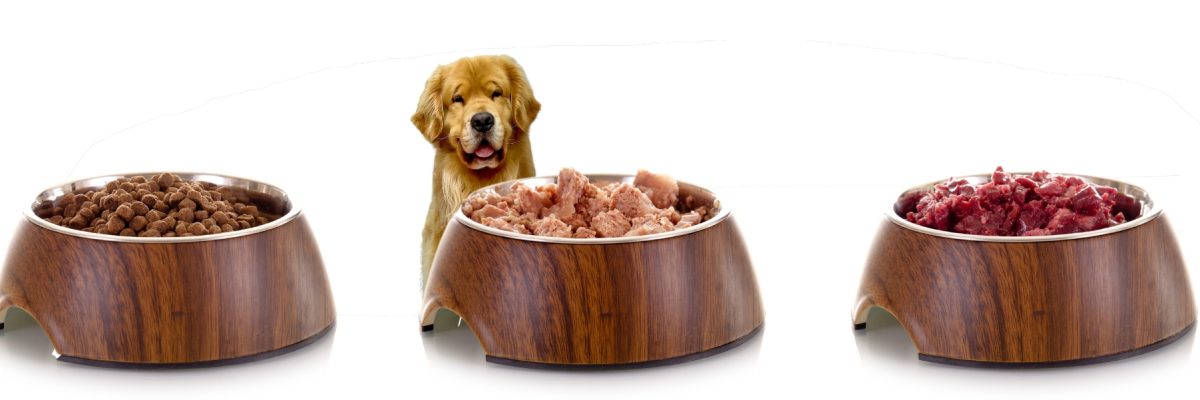You are what you eat, or so the saying goes, but how do you choose the best food for your best fren? Dogs come in all shapes and sizes, so the right choice of nutrition is individual to each doggo. Here’s some of the factors you may want to take into account when deciding what works best for you.

Know your dogs needs
It’s important to consider your pup’s size, age and level of activity when determining their nutritional needs. Puppies for example should be fed puppy-specific food (as opposed to adult dog food), as this is especially formulated with all the nutrients required for their healthy growth. Tiny puppies will initially need frequent, tiny portions, which slowly become bigger meals fewer times a day as they grow. Most owners feed their dog two half-portions of adult food a day by the time they turn 1, but bigger breeds may need to stay on puppy food a little longer.
Your breeder and/or vet and are great sources of information on puppy feeding, while those that love to delve into all the detail may want to consult the Merck Veterinary Manual for specific requirements. Generally, it is better to stick to puppy food too long than not long enough and to be guided by your dog’s condition and development.
Dry versus wet versus raw
Among the hundreds of brands, there are three main types of dog food: dry (often known as kibble), wet (often tinned or in a pouch) and raw (kept in a fridge/freezer). Dry food has a higher calorie content than wet, so can be a great option for particularly active or larger dogs and if you are tight on storage space. On the other hand, wet food is generally easier to eat and has a higher water content, so can be a good choice for dogs that are picky eaters, don’t drink enough water or have dental issues. The lower cost, extended shelf life and convenience of dry and wet food can make them a preferred choice over raw food, especially if other people will be helping to look after your puppy. We always have the best of each type of food on hand so Marley can switch if he needs to (easier to travel with dry food) of if he wants to (don’t make your pup be dependent on one food). Flexibility with food is a blessing but only if you’re very thorough on your research and can adjust to your dogs needs appropriately. Most people will tell you switching foods will give them an upset stomach, and that’s true for most. I know if I was on the same meal twice a day for my whole life I would struggle with something new too. While in NY PetPlate was our preferred wet dog food.
While dry and wet dog foods are typically highly processed, raw food is considered more natural and nutritious as it generally has less (hidden) filler content, including additives and preservatives that can trigger dietary allergies or intolerances in your dog. However, the fact it is fresher means it is also susceptible to bacteria, so you’ll need to make space for it in a fridge/freezer…and the smell of raw dog food in your fridge isn’t for everyone! If you are going down this route, we highly recommend a very well-sealed container as a minimum, while some owners choose to dedicate a whole extra fridge/freezer to their pet.
Read the packaging
While it can be difficult navigating the differences between commercial dog foods, there are certain requirements which make it easier. Beyond the picture-pawfect doggie models, the packaging must display all the information you need about a particular dog food.
Check the ingredients
This includes a full ingredient list starting with the primary component followed in descending order by the other ingredients. At a glance, the first 3 things you see listed are therefore the basis of that product so it should be easy to see if for example it is meat-based or has a high content of corn or rice. You’ll also be able to see the ratio of high-quality ingredients to additives and preservatives; as a rule of thumb, the fewer ingredients and the more easily recognizable they are, the better.
Know your portion size
@marleynyc When mom fills your dinner bowl and doesn’t realise dad just fed you.. #inthecrowd #sohappy #dogwin #funnydog #goldenretriever #viral
♬ take that mom – Valentin
Another helpful aspect of packaging is the dog feeding chart they have to feature, which shows the correct amount of food for your dog’s size and weight. Just double check if the recommendations are based on daily intake or per meal when determining appropriate portions as if your doggo is anything like Marley they’ll happily pretend it’s not enough! We have a designated cup that we measure out food with, so that portions are always roughly the same.
Supplements
Dog food that is labelled as ‘complete’ indicates it provides a balanced diet for your pooch, but what constitutes the perfect doggo diet is still the subject of much research and countless additional supplements are available to boost your dog’s condition. Some breeders, such as Marley’s, stipulate that you continue certain supplements throughout their life, to ensure better joint health and to keep their coat in tip-top condition for example. We have found a few great options with Native Pet our favorite.
Treats and human foods
Treats, including any human food, are complementary in that they don’t contain the correct balance of essential nutrients like regular dog food. For this reason, it’s suggested that no more than 10/20% of a dog’s intake should be made up of treats no matter how much they turn on the puppy eyes.
Whether you’ve got leftovers you’d like to share with fido, or have a cheeky swiper that hoovers up food at the first opportunity it’s really useful to know which human foods can be harmful to dogs. Be especially careful with onion, garlic, grapes, raisins, chocolate and avocado, which can all be poisonous to dogs and avoid giving your puppy salty or sugary foods. Also worth noting is that although they go together, well, like a dog and bone, cooked bones can be problematic as they become brittle and break into shards.
You may have seen Marley taste testing different human foods as part of his training. Fruits and vegetables that Marley enjoys include: apple, pear, kiwi, banana, mango, pineapple, peach, watermelon and cantaloupe as well as carrot, cucumber and celery. Other human foods like cheese, eggs and peanut butter are more popular high-value treats used for training or reward, but are best given in moderation as they are packed with calories.
If you are giving your doggie treats, remember to modify their calorie intake so they don’t become overweight. If you want to cut back on treats while still showing your dog how much you love them, try alternative rewards such as spending time playing with your pooch, taking them for walkies, getting them a new toy or giving them a groom.
Did you enjoy this post? Marley is eager to hear about your dog’s favourite treats! Let us know in the comments below and don’t forget to subscribe to be kept up-to-date on all the latest from us.


